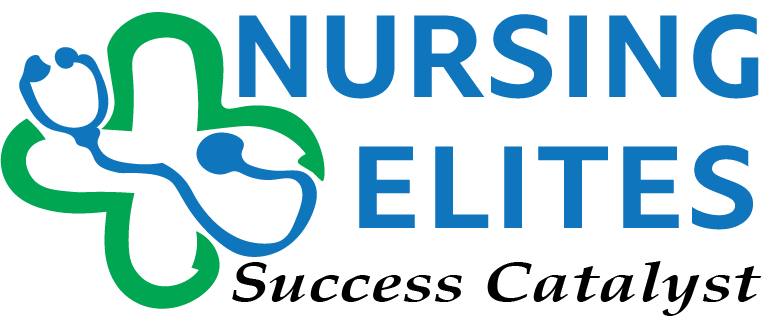A Medication Aide State Chart by the American Nurses Association shows that 9 out of 50 U.S. states lack med aide professionals. According to the findings, California only has med aides for assisted living, while Alabama only delegates medical aides in school settings. Taking med aide classes online is a worthy step that promises a $35,101 annual pay and job security. The best part is that you can hire our experts to sit your classes or ace your certification exam. Our online nursing class expert will explore what med aide classes entail, how to register for one, their content structure, examinations to anticipate, and licensing requirements.
Admission Requirements into Med Aide Classes Online
Med aide classes online are virtual academic sessions open for learners pursuing a career in medical assistance. Most applicants take these classes to add to their existing healthcare portfolios. However, anyone can join med aide sessions virtually, provided they have a high school diploma or GED equivalent. States such as Ohio require applicants to present additional proof of previous work experience and licensure as direct care workers, home health aides, CNAs, or other medical professionals. Other requirements include a valid practicing license by state and a minimum Accuplacer score, which differ depending on the school.
Med Aide Classes Online: Course Structure and Credit Hours
Med aide classes online do not have standard course structures and credit hours. Most classes take between 6 and 48 hours to complete, while others take a few weeks. However, the content section must meet state licensing requirements. For example, South Dakota requires all med aide classes to cover basic pharmacology, safety control measures, and fundamental med aide administration skills.
Generally, the med aide classes online must cover the following areas:
Introduction to Med Aide and the Role of Med Aide Professionals
The Introduction to Med Aide delves into the fundamentals of medication aide concerning the roles and responsibilities of medical assistants. These classes begin with the historical evolution of medical aide and the progress the field has made. Additionally, the lessons explain diverse contexts of med aide and their operations in homes, long-term care facilities, and hospitals. The introductory course takes 3 hours.
Med Aide Terminologies, Drug Names, and Accepted Abbreviations
Med aides should be up-to-date with the industry’s terminologies, pharmacological names, and accepted abbreviations for efficient communication. This class takes 4 hours of intensive learning of the lexicons of medication administration. Learners dive into the drug naming conventions, generic brand names, and the abbreviation for administration protocols. Practical quizzes after the class cover drug classifications, drug actions, and contraindications.
Med Aide Communication and Interpersonal Skills
This class explores the nuances of effective communication in med aide administration. Within 4 hours, learners study the importance of empathetic, culturally sensitive, and compassionate patient-caregiver. Med aide communication also emphasizes interpersonal skills like non-verbal cues, active listening, and adherence to state ethical and legal standards. The class ends with learning how to foster rapport between healthcare givers and patients during medical assistance.
Rights of Medication Administration and the Residents’ Rights and Freedoms
This class takes 4 hours. It delves into the six rights of medication administration residents’ rights related to medication administration. Learners will cover the right to documentation, route, dose, medication, time, and resident. The classes further explain the importance of informed consent and ethical consideration in shaping medication administration and patient autonomy. Practical scenarios include case studies from the state involving upholding the six rights.
Basic Anatomy and Physiology Proper Positioning and Body Mechanics
This class takes only 2 hours, providing a brief of human anatomy, physiology, and body mechanics. It explains the interdependence of anatomical and physiological theories in explaining proper positioning. The class begins with an overview of all anatomical systems, their functions, and interrelations. It further delves into adequate body mechanics during medical aide, explaining proper ergonomics, safe transfer, and patient comfort. Learners have access to practical simulations that reinforce their understanding of core concepts.
Basic Pharmacology
Classes on basic pharmacology have their hours listed per system. They delve into the fundamentals of pharmacology, drug classifications, medication categorization, and the roles of medical aides in pharmacology. Learners explore drug administration routes and the impact of particular medications on the human system. Introductory pharmacology class also provides a brief into the concepts of pharmacodynamics and pharmacokinetics, emphasizing the therapeutic effects of common drugs.
The Gastrointestinal, Musculoskeletal, Cardiovascular, Endocrine, Renal, and Sensory Systems
Each human system in the course overview has a class taking 3 hours. This course seeks to teach prospective medical aides the fundamental principles of each human system and their impacts on effective Medicare. They must also understand potential medication interactions and side effects for a holistic approach to patient care. Some states require students to study safe drug administration in a class taking 20 hours. This additional class builds upon the concepts of the human system to define all drug administration accessible to med aides. Learners will go through the oral, topical, ophthalmic, rectal, and vaginal drug administration.
Med Aide Documentation, Error Identification, and Reporting
Appropriate clinical record and documentation takes 2 hours, while medical error identification, documentation, and recording takes 4 hours. These two classes delve into the importance of accurate, timely, and ethical recording of vital information, including medical histories and insurance. Documentation also covers reporting protocols and the role of accountability and transparency in patient record management.
Becoming a Certified Med Aide
The last part of med aide classes online addresses the state requirements for learners seeking to become certified med aides. It covers the licensing requirements, state examinations, licensing durations, relevant fees, and license expirations. Each state requires learners to meet specific credit hours, usually 140 hours for licensing. They must also demonstrate their patient care ability by showing proof of work experience. Applicants should check with their state’s health department to stay up-to-date with all background checks.
Med Aide Classes Online: Certifications
Students who complete the med aide classes online must take an examination assessing their grasp of the course topic. Learners who pass the exam are awarded the Medication Aide Certificate. Applicants applying for licensing can use the certificate to prove they have learned the fundamentals some states require.
Hire Top Experts to Handle Your Med Aide Certification Exam
Passing the med aide certification exam is the only proof that a student took the med aide classes online, alongside getting a recommendation from the tutors. Failing in the exam means you’ll have to retake the course to address the knowledge gap and retake the test. Our nursing exam helpers can accurately handle your med aide certification exam to help you attain the minimum grade.




